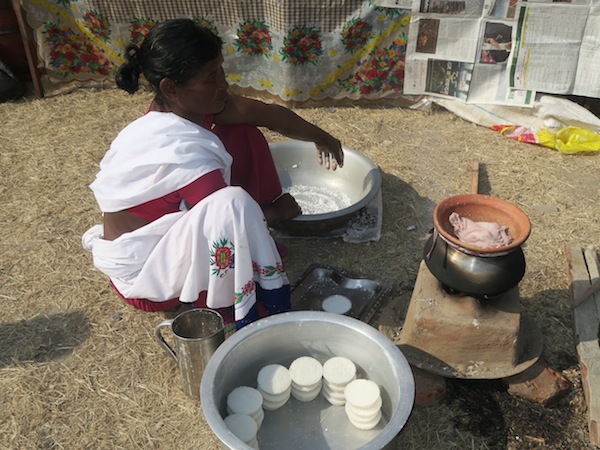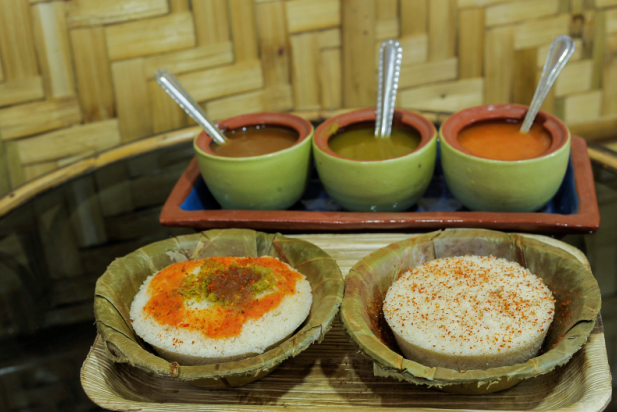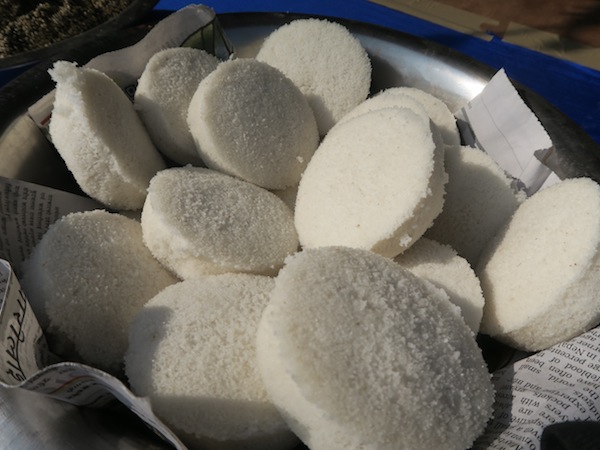Introduction:
Bhakka Recipe, a traditional Nepali delicacy, is a culinary creation that entices the palate with its unique blend of flavors and textures. Rooted in Nepali culture, Bhakka places a particular place on locals’ palates, affections, and food enthusiasts. This humble yet flavorful dish has been a staple in Nepali households for generations, offering a delightful blend of taste and nutrition. In this article, we delve into the essence of Bhakka, its history, ingredients, preparation methods, and the cultural significance it holds in Nepali cuisine.
Bhakka, also known as Khapse or Khaja in different regions, is a traditional Nepali food resembling crispy fried bread or biscuit. It is often made during special occasions, festivals, and family gatherings, symbolizing celebration and togetherness. While Bhakka can vary slightly in texture and flavor depending on the region and family recipe, its core ingredients typically include flour, butter or oil, sugar, and spices.
Ingredients Used in Bhakka:
Here are some Ingredients used in the Bhakka Recipe
- Flour: The primary ingredient in Bhakka is flour, usually wheat flour or a mixture of wheat and rice flour. The choice of flour can impact the texture and taste of the final product.
- Oil or Butter: An addition of either is made to the flour to bind the ingredients together and impart richness to the Bhakka.
- Sugar: Sugar adds sweetness to Bhakka, balancing out the flavors and enhancing its overall taste.
- Spices: Depending on personal preference and regional variations, spices such as cardamom, cinnamon, and nutmeg may be added to Bhakka for additional flavor.
Preparation Method:
The preparation of Bhakka is relatively simple, allowing home cooks of all experience levels to utilize it. Here’s a basic recipe for making Bhakka:
Ingredients:
- 2 cups of flour
- 1/4 cup of butter or oil
- 1/2 cup of sugar
- 1 teaspoon of ground cardamom (optional)
- Water, as needed
Instructions:
Preparing the Bhakka Recipe is a relatively simple yet time-honored process that requires patience and attention to detail. Here is a step-by-step guide to making Bhakka Recipe

Step 1:
Mix the flour, sugar, and ground cardamom (if using).
Step 2:
Gradually add the butter or oil until it resembles coarse crumbs, and thoroughly stir in the flour mixture.
Step 3:
Slowly add water, a little at a time, and combine until you have a nice dough.
Step4:
After the dough has formed, cover it with a moist cloth and allow it to rest for half an hour.
Step 5:
After the dough has rested, divide it into small portions and roll each into a thin disc or rectangle.
Step 6:
Using a knife or pastry cutter, cut the rolled dough into desired shapes, such as strips or triangles.
Step 7:
Heat oil in a deep frying pan or skillet over medium heat.
Step 8:
Carefully place the cut dough pieces into the heated oil and cook until crispy and golden brown.
Step 9:
Remove the fried Bhakka from the oil and drain the excess oil on paper towels.
Step 10:
Allow the Bhakka to cool completely before serving.
Also Read: How to Make Yomari? A Traditional Newari Cuisine Recipe
Cultural Significance:
Bhakka is a significant part of Nepali culture and traditions. It is often prepared during festivals such as Dashain and Tihar and weddings, symbolizing prosperity, happiness, and auspiciousness.
Making Bhakka is considered a communal activity, bringing families and communities together as they gather around the kitchen to prepare and enjoy this beloved delicacy. Additionally, Bhakka is often offered to guests as a gesture of hospitality and goodwill.
Variations of Bhakka:
While the basic recipe for Bhakka remains consistent, several regional variations and adaptations reflect the diverse culinary landscape of Nepal. Some popular variations include:
- Sweet Bhakka: This version of Bhakka is sweeter and often includes additional sugar and spices such as cinnamon and nutmeg.
- Savory Bhakka: For a spicy kick, Savory Bhakka may include cumin seeds, black pepper, and green chilies.
- Nutty Bhakka: For texture and flavor, chopped nuts such as almonds, cashews, and pistachios are sometimes added to Bhakka.
- Whole Wheat Bhakka: Instead of refined flour, whole wheat flour can make a healthier version of Bhakka.

Health Benefits of Bhakka Recipe:
While Bhakka is typically considered a treat, it provides some dietary benefits when consumed in moderation; in whole wheat, Bhakka, in particular, provides fiber, essential nutrients, and energy, making it a filling snack or accompaniment to meals. Natural ingredients like butter, spices, and nuts add flavor and promote satiety. It’s a versatile dish with several health benefits:
- Rich in Fiber: Bhakka is typically composed of whole grains, a high-fiber food source. Fiber aids digestion, prevents constipation and helps maintain a healthy digestive system.
- Nutrient-Dense: Whole grains used in bhakta are Rich in vital elements such as minerals, vitamins, and antioxidants, including B vitamins, iron, Magnesium, and zinc, which are essential for good health and well-being.
- Gluten-Free: Bhakka, made from gluten-free grains like millet or sorghum, is suitable for individuals with gluten intolerance or celiac disease, providing them with a safe and nutritious alternative.
- Promotes Satiety: Due to its high fiber content, bhakta can help keep you feeling prolonged feelings of fullness, decreasing the need to nibble between meals and supporting weight management efforts.
- Stable Blood Sugar Levels: Due to their slower rate of glucose release into the bloodstream, Whole grains are less likely to cause insulin spikes and help regulate blood sugar levels because they, compared to processed grains, have a lower glycemic index.
- Heart Health: The fiber, vitamins, and minerals in bhakta contribute to heart health by lowering cholesterol levels and the chance of heart problems such as heart attacks and strokes.
- Supports Bone Health: Some grains used in bhakka, like pearl millet, are rich in magnesium and calcium, which are necessary nutrients for strong bones and prevent diseases like osteoporosis.
- Boosts Energy: The complex carbohydrates in whole grains provide a sustained energy source, making bhakta an excellent choice for fueling your body throughout the day, especially for individuals who lead active lives.
Conclusion:
Bhakka Recipe is more than just a food in Nepali culture; it symbolizes tradition, togetherness, and celebration. Whether enjoyed during festivals, family gatherings, or everyday meals, Bhakka continues to hold a special place in the hearts and palates of Nepali people around the world.
By understanding its history, ingredients, preparation methods, and cultural significance, we can truly appreciate the essence of this beloved Nepali delicacy. So, the next time you’re craving a taste of Nepal, why try making Bhakka and experience its delightful flavors?
Read More: Maghe Sankranti Food: A Culinary Celebration in Nepal

